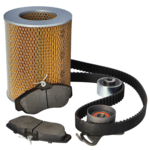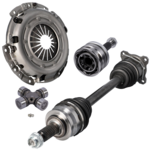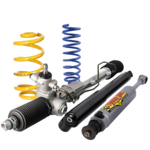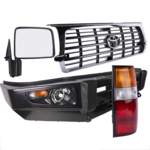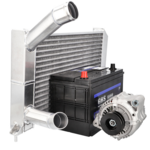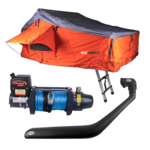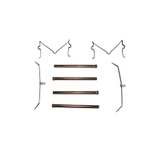Why change brake discs, calipers and pads?
Changing the brake discs, callipers and pads on your 4x4 is important for optimum braking performance, especially on the front axle. It's not a minor operation, and it can be a little frightening, given what's at stake.
However, it's not as complicated as all that, and if you have the right equipment, it's within your reach thanks to this tutorial.
In this article, we explain step by step how to change your vehicle's front brake discs, callipers and pads.
We chose to change the front brake discs, calipers and pads on a Toyota KDJ 120. However, this tutorial is valid for many 4x4 models.
TOOLS REQUIRED
To change the front brake discs, calipers and pads on your 4x4, you need :
. Jack (the vehicle's own or a rolling jack)
. Axle stands
. Cross spanner
. Wooden wedges
. Ratchet spanner + 17 and 12 mm sockets
. 10" pipe spanner
. Flat screwdriver
. Hammer
. Flat nose pliers
. Brake cleaner
. Transparent container for recovering brake fluid
. Sufficiently long hose
. Brake fluid canister
. Rags
LEVEL OF DIFFICULTY
To give you an idea of the level of difficulty of our tutorials, we've graded them from 1 to 5.
Changing front brake discs, callipers and pads is level 2.
WORKSHOP
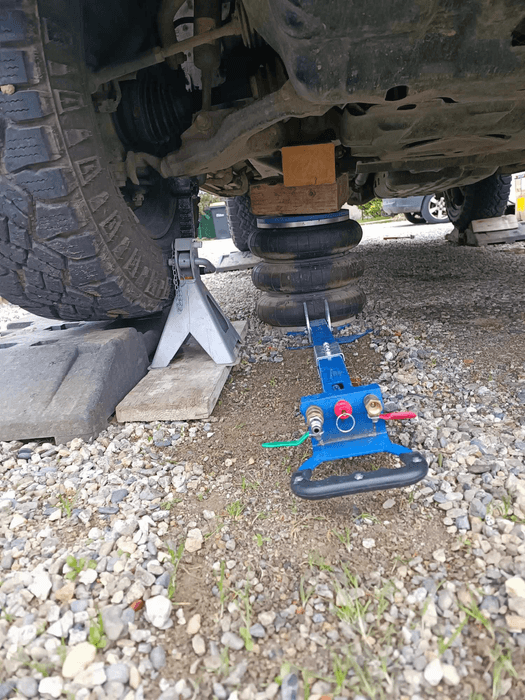
1 - Before accessing the brakes, don’t forget the important basics: before lifting the wheel with a jack, you need to secure the vehicle: on a flat surface, apply the handbrake, change gear (or put the car in Park on an automatic gearbox), and chock a rear wheel. Don’t lift the car yet, release the wheel nuts while the car is on the ground. Then you can lift the car and finally remove the wheel. If you have a axle stand, place it under the car. Remember that the jack must be fitted in the place the manufacturer recommends in the vehicle manual.
Tip: Put the dismantled wheel horizontally, under the car: that way, if by chance the jack gives way and the car falls again, it will fall onto the wheel. This is better than if it falls with all its weight onto the ground, onto the disc, and possibly onto you.
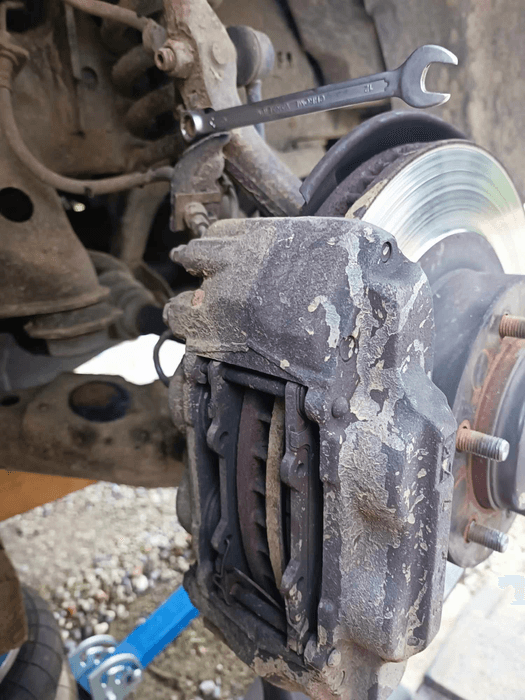
2 - Remove the brake hose support from the pivot arm.
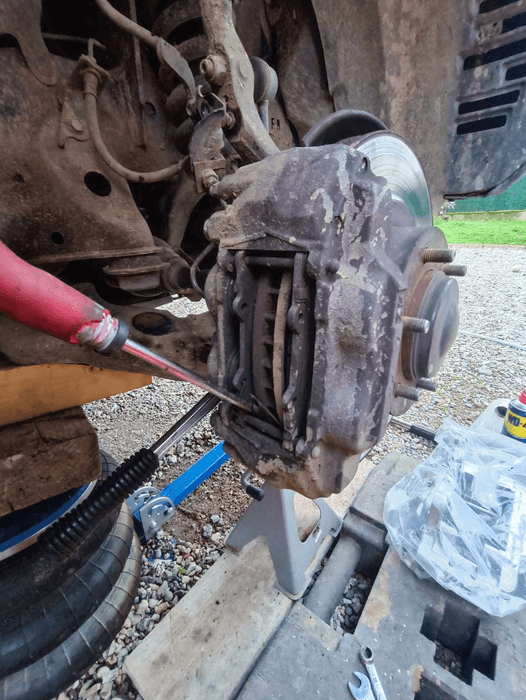
3 - The brake pads and mounting accessories can now be removed.
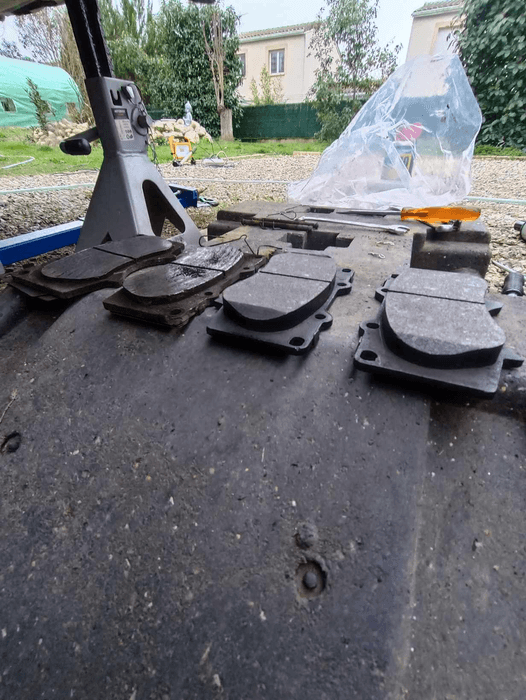
4 - Our brake pads really needed changing.
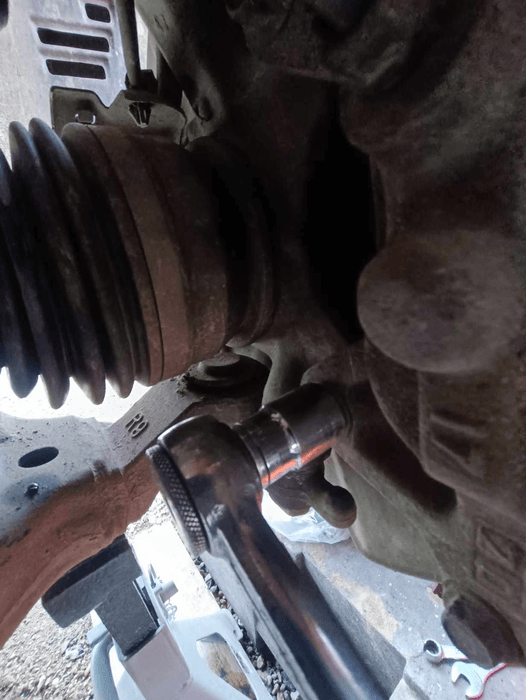
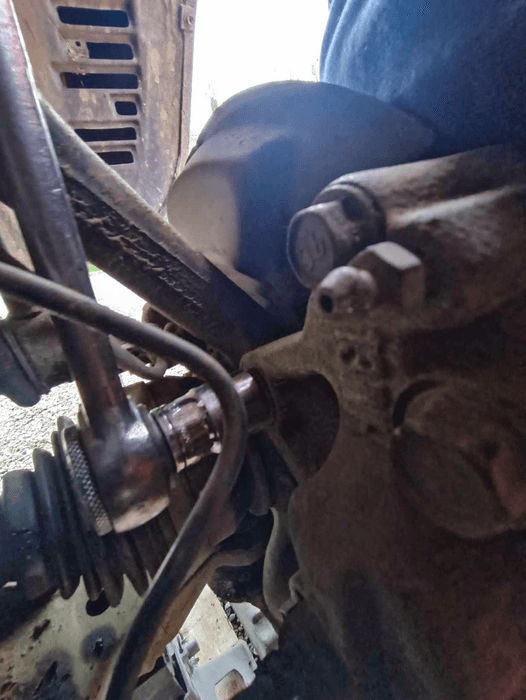
5 - To remove the brake caliper, remove the top and bottom mountings.

6 - Set the caliper aside, holding it so as not to damage the brake lines.
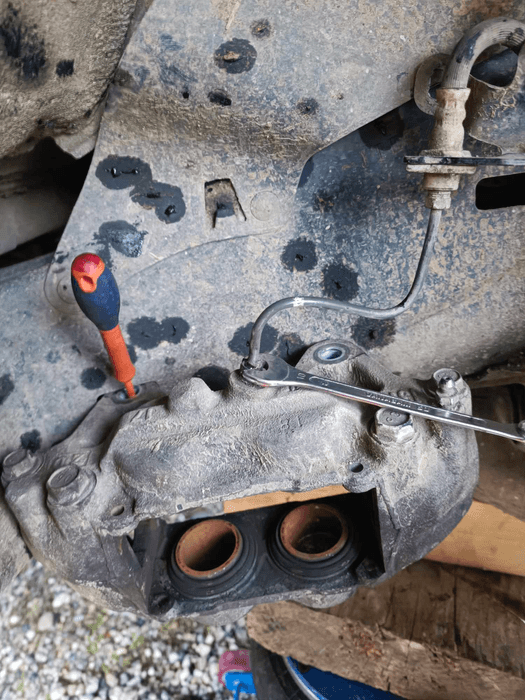
7 - You can now disconnected the pipes from brake calliper.
This step can be carried out in reverse: disconnect the bracket from the pipework and then remove it.
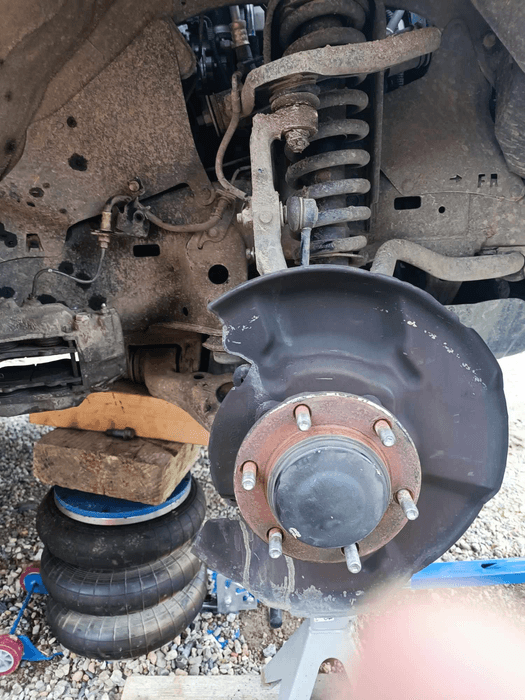
8 - Removing the brake disc is easy, once the caliper has been removed.
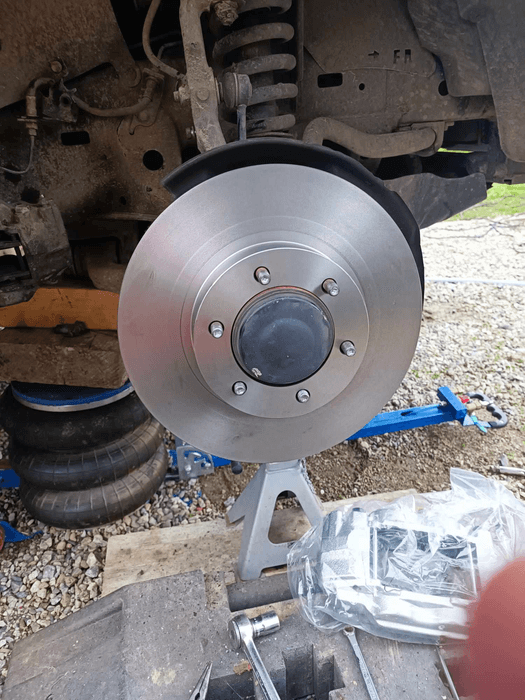
9 - After cleaning the wheel hub and brake flange, fit the new disc.
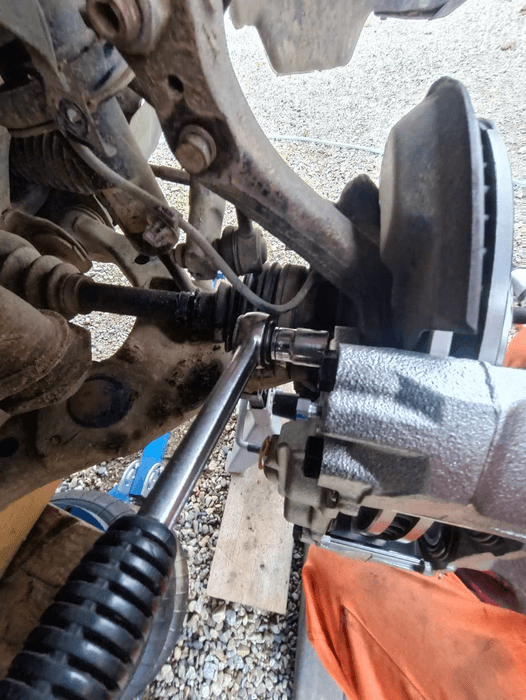
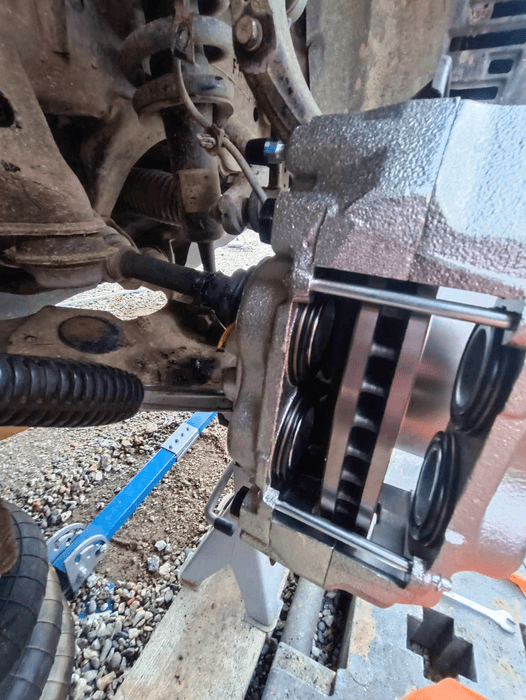
10 - The new brake caliper can then be positioned and fitted.
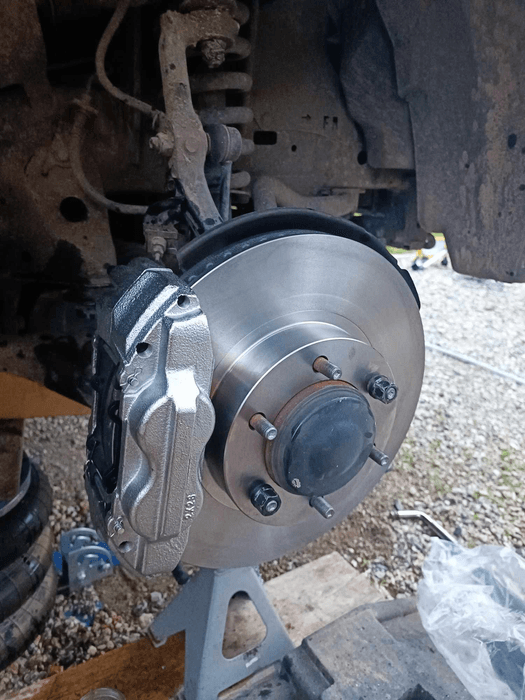
11 - Now it's time to fit the new brake pads with their mounting accessories.
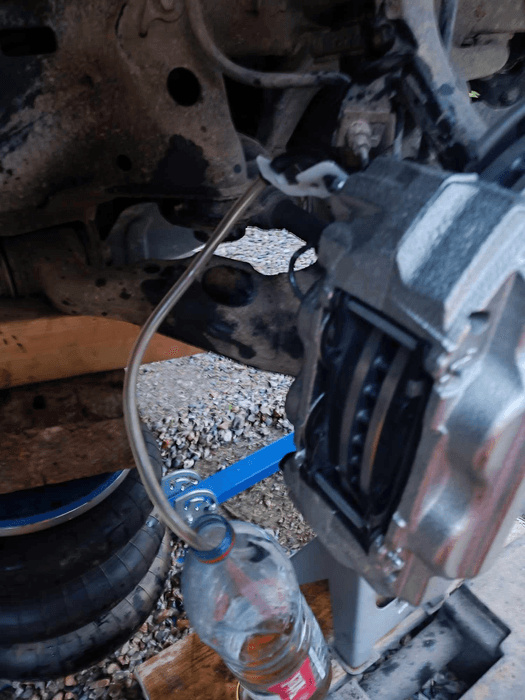
12 - The brake pipe can now be connected to the new caliper and refastened to the pivot arm.
For the other wheel, simply repeat the same method.
Once both sides have been done, put the wheels back on and lower the vehicle back down on the ground. It is then essential to bleed the brake system.
Check out the tutorial: Bleed your brakes
Don't set off without testing the brake pedal and the brake fluid level.

PARTS
Find the front brake discs and pads to suit your vehicle:
Tutorial produced with the help of Laurent RAGUIN
Do it yourself, you'll be even prouder! To help you out, Euro4x4parts shares its know-how and expertise in mechanics through 4X4XPERT: new products, technical sheets, and personalized tutorials... You've got the keys!
And because we also learn from your experiences, your feedback is essential. Let us know your thoughts and suggestions by email: 4x4xpert@euro4x4parts.com
Check out our complete catalogue of 4x4 parts and accessories!
All the photos in our articles are taken on authorized roads or tracks, private land, or during supervised competitions. Let's all do our part to preserve the environment!
Please note: Euro4x4parts publishes this information to help its customers, but cannot be held responsible for the advice given here and their consequences when used.








